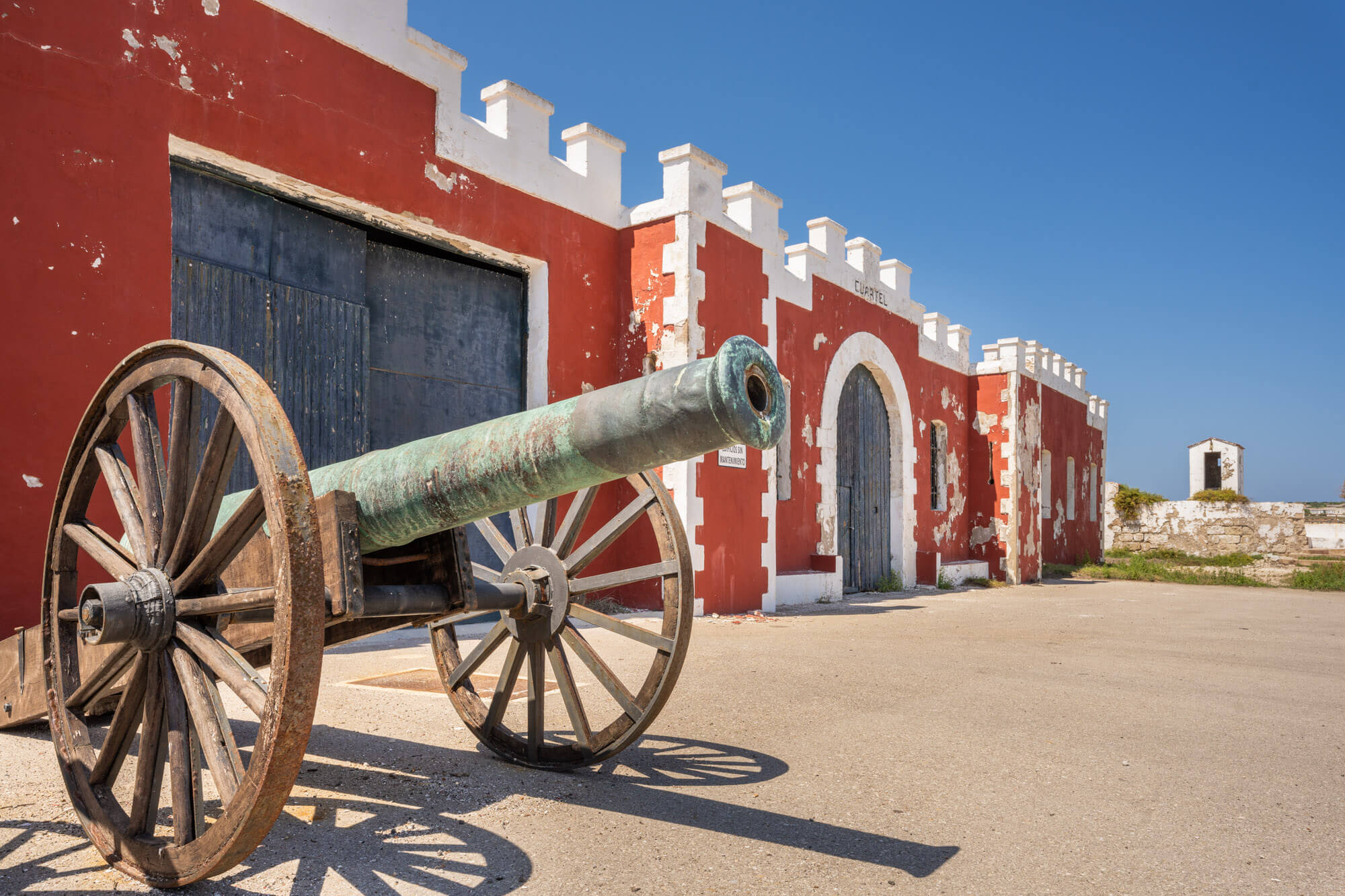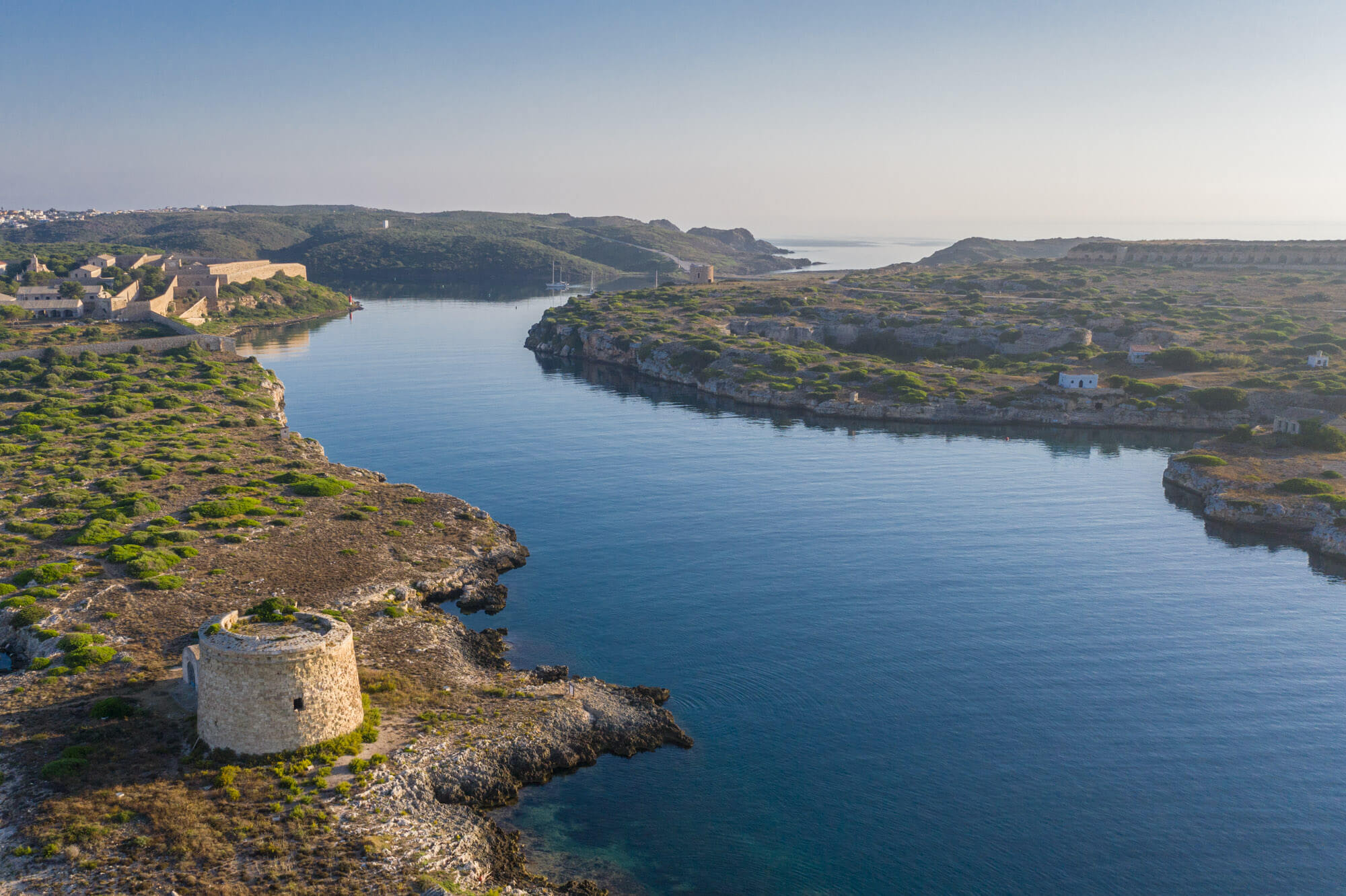Consorcio Militar
Foreign dominations of Menorca during the 18th century
In the 18th century, the island went through three periods of British rule, interspersed with a brief French occupation and a few years of reincorporation to the Spanish Crown. All these changes greatly influenced local life by transforming economic conditions and to some extent the mentality and customs of the island.
The War of the Spanish Succession brought a true civil war to Menorca, which was at first on the side of Felipe V, until when Mallorca was declared by the Archduke of Austria (called Carlos III) his supporters also rose up on our island. These were concentrated in Es Mercadal, under the leadership of the nobleman Juan Miguel Saura Morell, and with the support of the General University an army of 1,500 men was organized, which occupied the castle of Fornells and besieged that of San Felipe, in which the supporters of the Bourbons resisted under the orders of the Governor of the island Don Diego Leonardo Dávila.
After 3 months, the besieged received help from France, with five ships that anchored in the port of Maó, and thus they were able to force the others to lift the siege and took over the entire island, signing the capitulation in Ferreries and entering triumphantly in Ciutadella on January 12, 1707.
English occupation
The Bourbon victory did not last long as in September 1708 an Anglo-Dutch squad seized the island to restore it to the Archduke, but although at first the sovereignty of the Habsburgs was recognized, the occupation soon became a true English domain, a situation which was confirmed on April 14, 1713 by the Treaty of Utrech, in which Spain was forced to cede the Rock of Gibraltar and the island of Menorca to England. For Great Britain Menorca represented a valuable enclave in the Mediterranean, which ensured its constant expansion. The first and most notable governor was Sir Richard Kane, who resided in the castle of San Felipe.
In February 1722, disgusted by the opposition he found in the town of Ciutadella, influenced by the nobility and clergy, against the British, he transferred the island capital to Maó. This change enclosed the ancient city within itself, living on past glories. On the other hand, Maó, which was much smaller, was growing rapidly, especially because of its large port, and it suited the rulers.
French occupation
On April 18, 1756 (Easter Day) 12,000 French soldiers landed in Ciutadella under the command of the Duke of Richelieu. That same day the 300 English soldiers from the Ciutadella garrison had withdrawn towards Maó, and the juries of the old capital offered no resistance to occupy the city. The French troops, crossing the island, went to besiege the castle of San Felipe. On May 20, naval combat began between a French squadron led by Admiral La Galissonnière and Admiral Byng’s English, in front of the entrance to the port of Maó. After an arduous fight that lasted all afternoon, the victory favored the French.
The British besieged in the castle of San Felipe were only 2,500 men, commanded by the governor Sir William Blakeney. They defended themselves heroically, but could not resist against the vastly superior number of the French. The capitulation of the British was signed on June 29.
During the short French occupation, it is worth highlighting the founding of the town of Sant Lluís, which was carried out with a subdivision and a straight route in the Binifadet garrigue, raising in its center a slender church dedicated to King Saint Louis.
By the peace of Paris in 1763 France returned to England the possession of Menorca. The English also left their printing press building another population center next to the shore of the port of Maó. This was drawn with a broad vision of the future and was named Georgetown in memory of the English sovereign.
Spanish occupation
On August 19, a Franco-Spanish squadron, made up of 52 ships under the command of the Duke of Crillón, landed in the coves of Sa Mesquida and Alcaufar. The castle of San Felipe was besieged for a long time, until the English surrendered on February 4, 1782.
One of the first measures that the Spanish government adopted was the destruction of the castle of San Felipe, judging that this would make it more difficult for foreign powers to covet the island and that if they seized it they would be more easily evicted. The name of Georgetown was also replaced by that of Real Villa de San Carlos, in honor of the monarch Carlos III.
In 1797 its own bishopric was created on the island, dismembering it from that of Mallorca and naming the citizen Don Antoni Vila y Camps as the first bishop. With this, the endless rivalries between Ciutadella and Maó also reappeared, as a matter of which of the two cities the episcopal see was to be located.
In the end, the episcopal see was located in Ciutadella, considering that the houses and lands of the old pavordía passed to the bishop and town hall, in addition the main church of Ciutadella seemed the most suitable for cathedral.
Menorca would still pass another English domination, although it only lasted from 1798 to 1802. The alliance of Spain with the first French republic, made in the time of Charles IV by imperatives of peace, caused the break with England and the consequent conquest of Menorca.
In 1802, by the Treaty of Amiens, Menorca definitively returned to Spanish hands. At the time the island was being handed over, a ship appeared in the port of Maó carrying an urgent dispatch from London, ordering the British governor not to surrender the island. His delay prevented history from changing.







